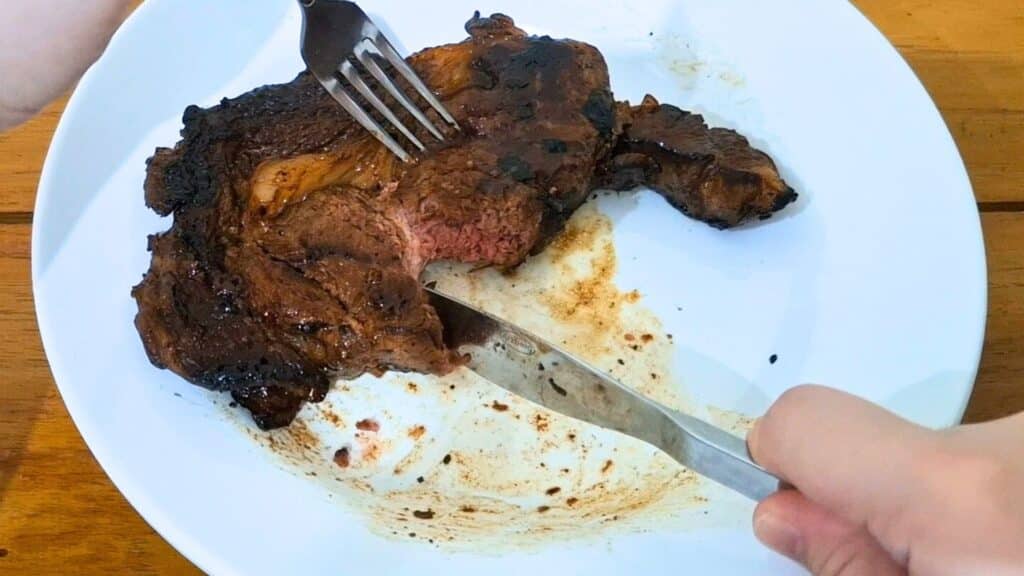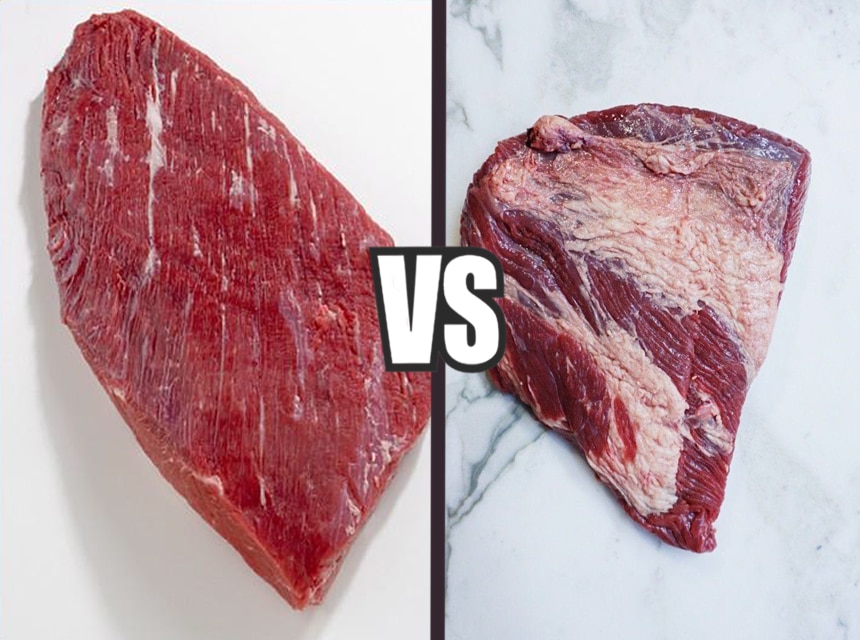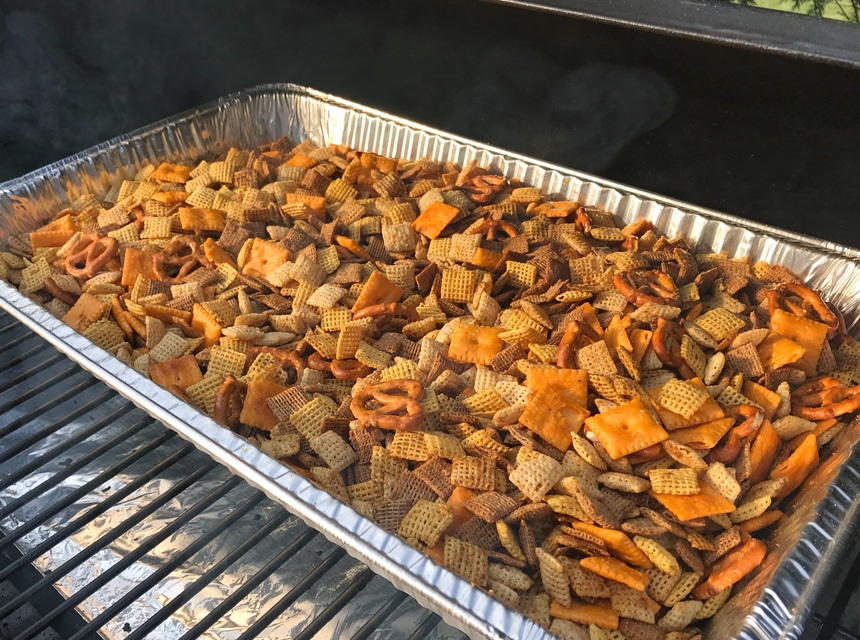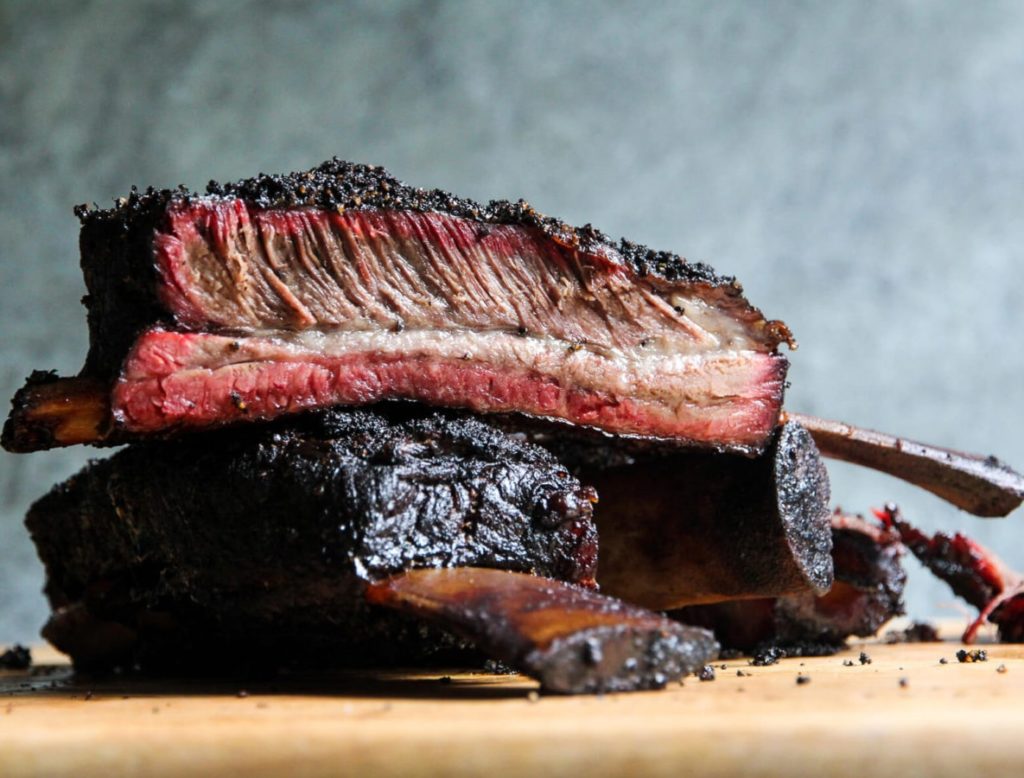

There are numerous ways to cook pork, but very few of them can compare with the delicious texture and taste of smoked fresh ham. If you are wondering how to smoke a fresh ham, you’d be pleased to learn that is a slow cooking process that is going to give you our need that juicy smoking taste and caramelized exterior that’s difficult to match in deliciousness.
So how do you smoke a fresh ham? Do you need a brine? How do keep it moist? How long do you smoke it? What kind of wood learned to use? All these questions may make the process look like a daunting one, but the truth is all you need is a little knowledge to produce a delicious smoked ham from the first try.
Let’s have a look at how to smoke a fresh ham the easy way.
Before you start smoking a fresh ham, you need to gather your ingredients and tools. This is what you need to smoke a ham:
A quality smoker — A quality smoker is essential for obtaining a succulent smoked ham with a caramelized top that everyone will love. The best smokers on the market are designed to regulate the temperature for you and have a side table for all your smoker accessories. You can choose from pellet, charcoal, and propane smokers. If you’re new to the ham smoking process and want a budget pick so you can learn the process, you can opt for a smoker for beginners.
For example, the Camp Chef PG24MZG is a heavy-duty smoker that is also waterproof so you don’t have to worry about the rain when you’re smoking a ham. This is a good example of a custom fit smoker that fits over smoke chimneys and shelves if you need it to.
Charcoal — it’s always a good idea to keep a bag of charcoal handy because you may need to add more in order to regulate the temperature
Fresh ham — a fresh ham Trusted Source Ham - Wikipedia Ham is pork from a leg cut that has been preserved by wet or dry curing, with or without smoking.[1] As a processed meat, the term “ham” includes both whole cuts of meat and ones that have been mechanically formed. en.wikipedia.org typically comes from the rear leg of a pig and is typically sold in different portions, the butt portion and the shank portion. The shank portion is typically cheaper and contains a large bone, but some people prefer the butt because it has more meat on it. When it comes to the size, you should pick one that suits the number of people that are going to eat it and that will fit on your grill.
Rub ingredients — these may vary according to taste, but some of the ingredients that are typically used when smoking a fresh ham include kosher salt, black babbler, paprika, onion powder, garlic powder, chilli powder, dried oregano, and dried thyme.
Aluminum foil
Meat thermometer — a grilling thermometer is essential for measuring the internal temperature of the ham as it’s cooking. A digital wireless thermometer such as the ThermoPro TP20 makes it easy to smoke meat because you don’t have to babysit the smoker. You can use the mobile receiver to get updates on the temperature in the oven while you’re entertaining guests or simply do chores around the house. This type of thermometer is ideal not just for smoking ham but also when cooking various types of meat, including beef, chicken, lamb, or fish.
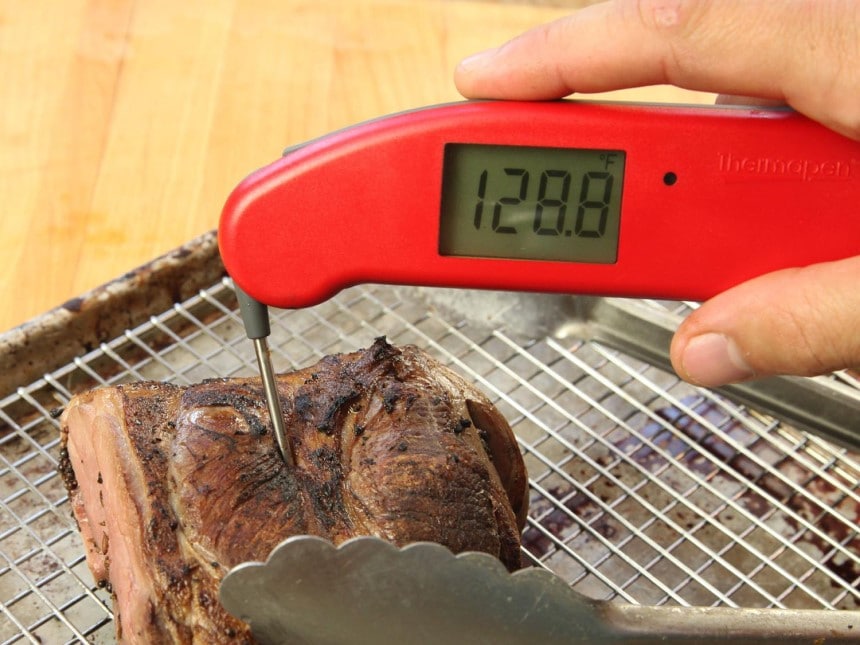
Pineapple juice
Yellow mustard
Meat injector — this is optional, but you’ll need it if you want to inject the meat during the cooking process for extra succulence. Read more below about what to use to inject the ham if you want.
Wood chunks — the type of wood you want to use for smoking a fresh ham is entirely up to you, with popular options including hickory, oak, cherry wood and apple wood. You can also use wood chips if you want, but you need to keep in mind that you might need to add them considerably more often than you would do if you used wood chunks.
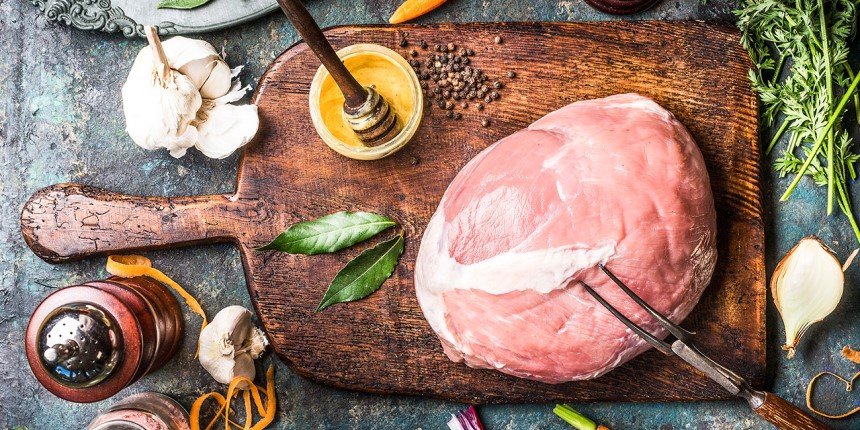
Next, coat the entire hand in yellow mustard. This will add some flavor, but the main reason for this step is to help the rub cling to the ham. Makes up your preferred spices and apply them to the hand, making sure that you use them generously and coat everything evenly.
An optional step is to inject some flavor deeper into the meat so you can add some extra moisture. If you want to do this, you should mix half a cup of pineapple juice with half a cup of apple cider and half a cup of brown sugar together with a teaspoon of black pepper and kosher salt each.
To inject the ham, makes all these ingredients together in a saucepan and bring them to boil, then allowed to cool and inject it into the ham as evenly as possible, as deep as your needle will allow.
It’s now time to prepare your smoker. You can do this while you prepare the ham so you speed up the process. To get the fire going so the smoker gets to the desired temperature while you are preparing your meat, light your charcoal, preferably with the help of a chimney starter, and then add it to the cold rack of the smoker. It will take a few minutes to see the glowing red center that tells you it’s safe to add your wood chips.
Now it’s time to put the prepare ham on the smoker. Here’s how to do it safely and to ensure the best results.
Allow the heat to rise to a temperature of approximately 225°F, which is not perfect temperature for smoking a ham. It’s also important to check in often in order to make sure that you are temperature remains constant. You can use a digital thermometer to do that.
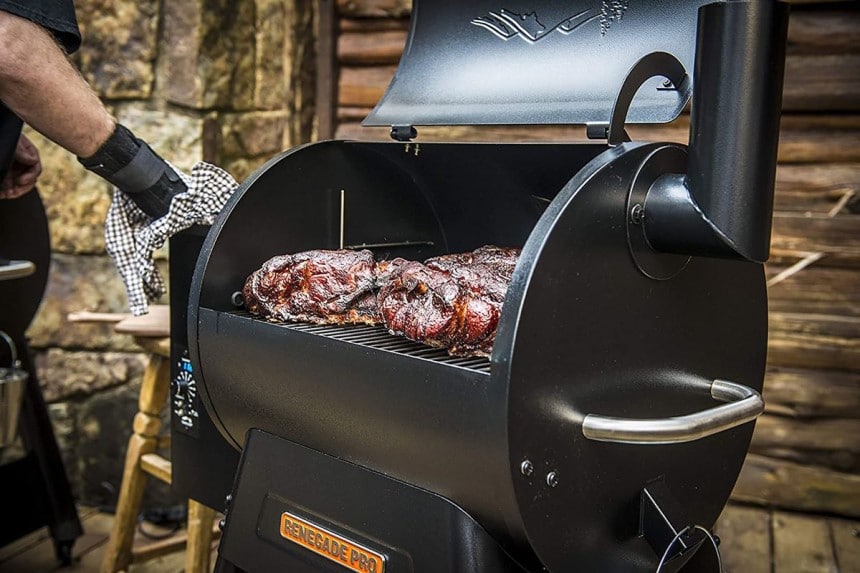
It’s important to ensure that you have a steady amount of smoke throughout the duration of the cooking, and you can do so by adding more down toward when needed. To help caramelise the crest and prevent the rub from burning, fill a spray bottle with pineapple juice and spray the ham once an hour with a light mist. Don’t do it more often than that, because you would have to open the lid multiple times and lose your temperature and smoke.
If you’re wondering how long to smoke a fresh ham, the answer is it depends. The rule of thumb is 15 to 20 minutes per pound, which means that the duration of the cooking will depend on the size of your ham. It’s always a good idea to cook the ham to an internal temperature of 190°F.
Any smoked ham needs to reach an internal temperature of 190°F in order to be considered ready to eat. However, reaching this temperature requires quite a bit of patience because you don’t want the skin of the ham directly exposed to heat the entire time because this will destroy your rub.
As such, you should insert your meat thermometer into the deepest part of the ham when you are about 2/3 of the way through the calculated time. Check the temperature without hitting the bone.
Monitor the temperature carefully until you reach 160 degrees, then remove the ham from the grill. Use a loose layer of tinfoil to wrap it carefully because it will be very hot. Leave a small opening on each side to continue to allow the smoke to penetrate the ham. Place the ham back on the grill and then continue to monitor the temperature until it gets to 190 degrees.
Once you have reached the desired temperature of 190 degrees Fahrenheit, remove the ham from the grill, but don’t take off the tinfoil. It’s essential to let the ham rest for approximately 30 minutes before cutting it. This is the same as you would do with a pork loin, turkey breast, or steak.
By allowing the ham to rest, the juices that have been driven to the center during the cooking process will be redistributed. This contributes to a tender cut when you cut the meat. Once the half-hour has passed, it’s time to carve the smoked ham and serve it up.
Now you know exactly how to smoke a fresh ham, so it’s time to take on the challenge. The method above makes it easy to obtain a succulent smoked fresh ham. Even though the process may seem daunting at first, particularly if you haven’t smoked a fresh ham before, having the right knowledge and tools is very helpful, and you shouldn’t have trouble obtaining a perfect smoked meat with a beautifully caramelized exterior.
Always make sure you measure the temperature of the meat correctly and don’t forget to wrap the meat for the final stage of the cooking to prevent the ham from becoming too dry and the rub spice from burning. A succulent piece of smoked ham is the ideal choice for Christmas, but it’s also a great option for those moments you’re simply craving some pulled pork sandwiches.
If you want to learn more about the process of smoking a fresh ham and generally about meat cooking, there are lots of cooking books on this theme available, with Franklin Barbecue: A Meat-Smoking Manifesto being an example.
